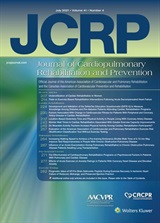Journal: Brain and Behavior Authors: Lonneke A. van Tuijl, Adri C. Voogd, Alexander de Graeff, Adriaan W. Hoogendoorn, Adelita V. Ranchor, Kuan-Yu Pan, Maartje Basten, Femke Lamers, Mirjam I. Geerlings, Jessica G. Abell, Philip Awadalla, Marije F. Bakker, Aartjan T.F. Beekman, Ottar Bjerkeset, Andy Boyd, Yunsong Cui, Henrike Galenkamp, Bert Garssen, Sean Hellingman, Martijn Huisman, Anke Huss, Melanie R. Keats, Almar A. L. Kok, Annemarie I. Luik, Nolwenn Noisel, N. Charlotte Onland-Moret, Yves Payette, Brenda W. J. H. Penninx, Lützen Portengen, Ina Rissanen, Annelieke M. Roest, Judith G. M. Rosmalen, Rikje Ruiter, Robert A. Schoevers, David M. Soave, Mandy Spaan, Andrew Steptoe, Karien Stronks, Erik R. Sund, Ellen Sweeney, Alison Teyhan, Ilonca Vaartjes, Kimberly D. van der Willik, Flora E. van Leeuwen, Rutger van Petersen, W.M.Monique Verschuren, Frank Visseren, Roel Vermeulen, Joost Dekker. (2021). “Psychosocial factors and cancer incidence (PSY-CA): protocol for individual participant data meta-analyses.” Brain and Behavior. Abstract Objectives: Psychosocial factors have been hypothesized to increase the risk of cancer. This study aims (1) to test whether psychosocial factors (depression, anxiety, recent loss events, subjective social support, relationship status, general distress, and neuroticism) are associated with the incidence of any cancer (any, breast, lung, prostate, colorectal, smoking-related, and alcohol-related); (2) to test the interaction between psychosocial factors and factors related to cancer risk (smoking, alcohol use, weight, physical activity, sedentary behavior, sleep, age, sex, education, hormone replacement therapy, and menopausal status) with regard to the incidence of cancer; and (3) to test the mediating role of health behaviors (smoking, alcohol use, weight, physical activity, sedentary behavior, and sleep) in the relationship between psychosocial factors and the incidence of cancer. Methods: The psychosocial factors and cancer incidence (PSY-CA) consortium was established involving experts in the field of (psycho-)oncology, methodology, and epidemiology. Using data collected in 18 cohorts (N = 617,355), a preplanned two-stage individual participant data (IPD) meta-analysis is proposed. Standardized analyses will be conducted on harmonized datasets for each cohort (stage 1), and meta-analyses will be performed on the risk estimates (stage 2). Conclusion: PSY-CA aims to elucidate the relationship between psychosocial factors and cancer risk by addressing several shortcomings of prior meta-analyses. https://doi.org/10.1002/brb3.2340








